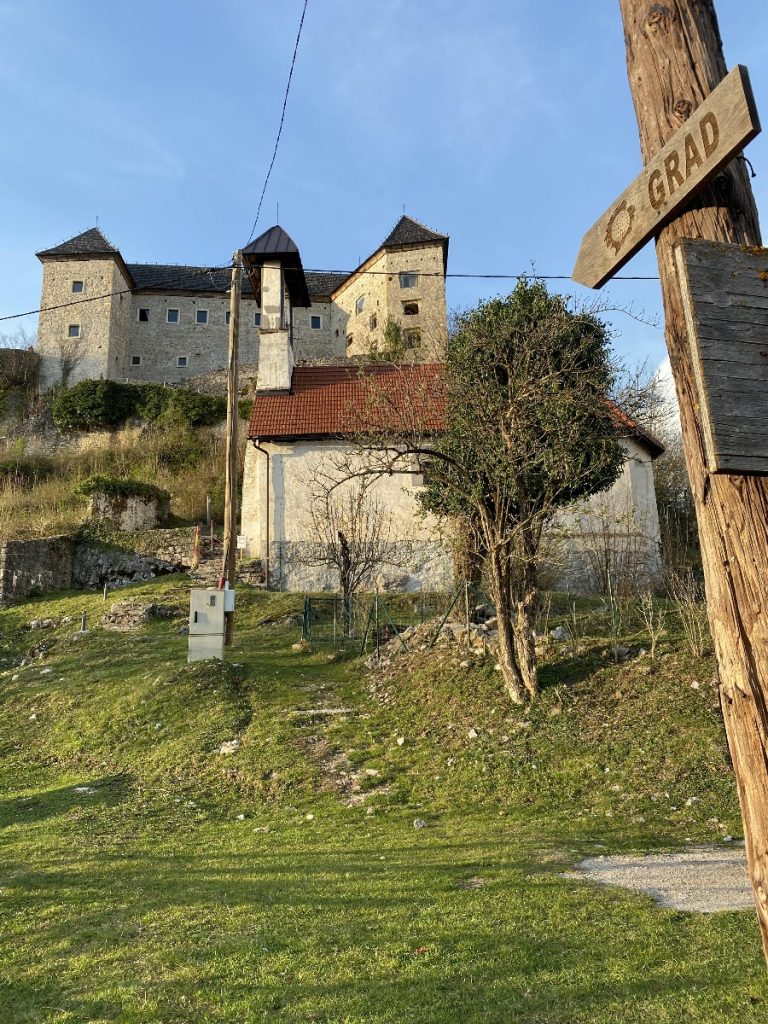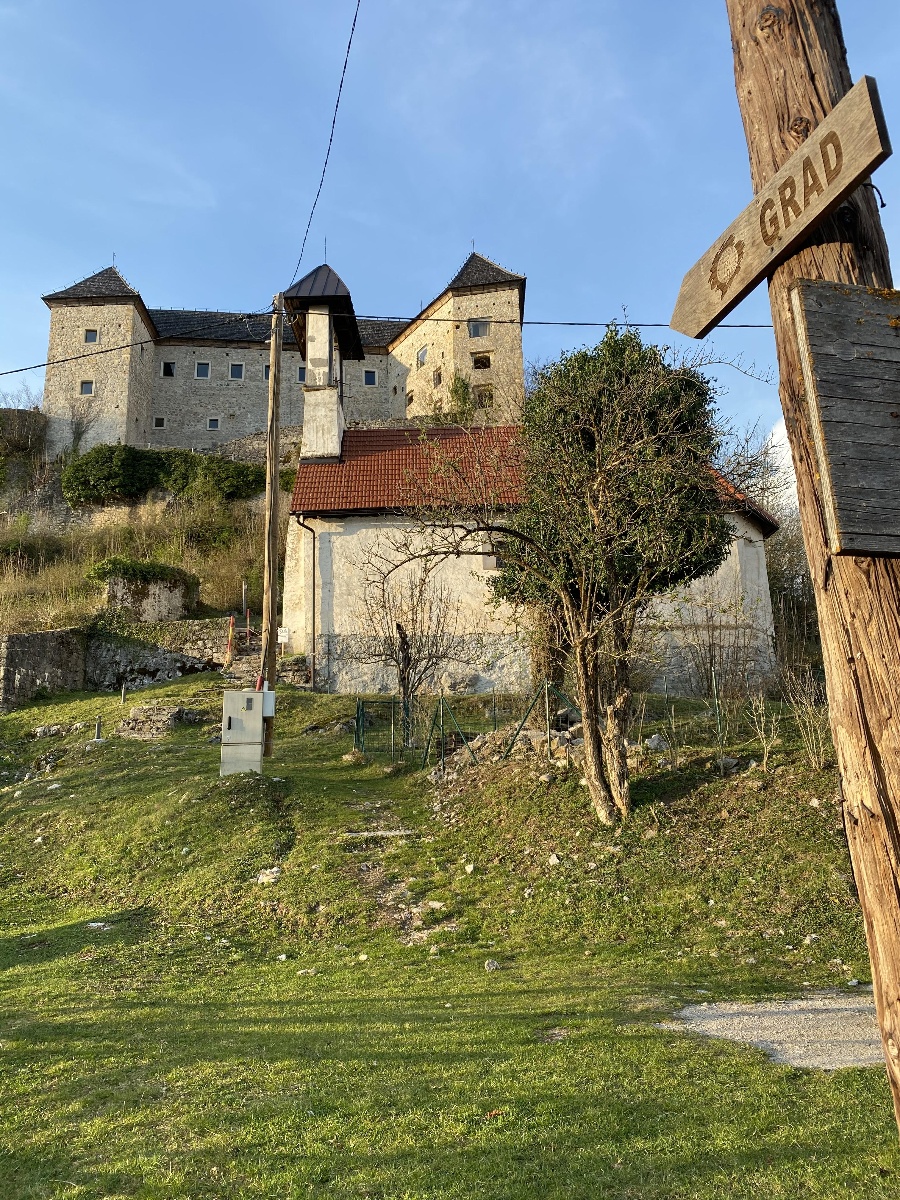Najpomembnejši spomenik srednjega veka v Kostelu

Grad Kostel, ki se je prvotno imenoval nemško Graffenwarth (grofovska straža), predstavlja drugi največji grajski kompleks na Slovenskem. Stoji na vrhu strmega hriba na nadmorski višini 406m nad dolino reke Kolpe, zato je bil za sovražnike težko dostopen. Prvič je bil omenjen okoli leta 1333. Zgradili naj bi ga grofje Ortenburžani, kasneje pa so ga v 15.stoletju utrdili in razširili grofji Celjski.
Zgrajen je iz kamna in lesa. Sestavljajo ga zgornji in spodnji del gradu, trg in naselje. Nekoč je imel grad tudi obzidje s stolpi, ki se je sčasoma porušilo. Zaradi svoje lege je bil grad eden od kresišč, s katerimi so prebivalci opozarjali na prihod Turkov v deželo.
Zgradba je nastajala v težkih pogojih, saj so jo dvakrat porušili in požgali, zato od nje ni ostalo kulturno-umetniških predmetov. Prvotno je imel grad renesančno zasnovano obzidje, v drugi izgradnji pa je bil zasnovan baročno. V občini Kostel je grad najbolj pomembna kulturna znamenitost, saj je po njem dobila svoj grb in ime. Veliko podatkov o gradu sem si zapomnila od domačinov v Kostelu, saj sem na dedkovi domačiji, ki gleda proti gradu s sosednjega hriba, preživela velik del otroštva in z zanimanjem prisluhnila njihovim zgodbicam iz »starih« časov.
Viri in literatura:
SVETIK, Peter. (2001). Kostelski biseri. Turistično športno društvo Kostel
ŽAGAR, Jože. (1983). KOSTEL – Ljudje in zemlja ob kolpi. Kulturna skupnost občine Kočevje
Informativni video: https://www.youtube.com/watch?v=rKCcUlJh0YM
THE CASTLE KOSTEL
The most prominent monument of the Middle Ages in Kostel
The Castle Kostel was initially named in German Graffenwarth (the Counts´ guards) and it represents the second biggest castle complex in Slovenia. The building stands at the top of a steep hill at the altitude of 406 m overlooking the river Kolpa, this is why it was practically inaccessible to enemies. It was first mentioned around the year 1330 by the Counts of Ortenburg and was later reinforced and expanded by the Counts of Celje in 15th century.
The castle was solidly built of natural materials, mostly of rocks. It consists of the upper and the lower part of the castle, a small square and a settlement. In the past the castle had a defensive wall with lookout towers, that were demolished trough time. Because of its position it was one of the bonfire points which were lit on hilltops to warn the local population about Turkish invaders.
The building was built in tough conditions, it was demolished and burned down twice and this is the reason why there aren’t any cultural or artistic artifacts left. Initially it had a Renaissance-style defensive wall, but in the second construction it was designed in Baroque style, in the shape of curved columns. The Castle Kostel is the most important cultural sight in the municipality of Kostel. The municipality got its name and the coat of arms after it. I gained most of the information from the residents of Kostel, because I spent a big part of my childhood on my grandpa´s farm that directly overlooks the castle Kostel, where I listened to the locals´ »old-times« tales.
Sources:
- Peter Svetik, Kostelski biseri; published by Turistično športno društvo Kostel, 2001
- Jože Žagar – Jagrov, KOSTEL – Ljudje in zemlja ob Kolpi; published by Kulturna skupnost občine Kočevje, 1983
- Informative video: https://www.youtube.com/watch?v=K4z9trAkLTs
Rebeka Padovac
